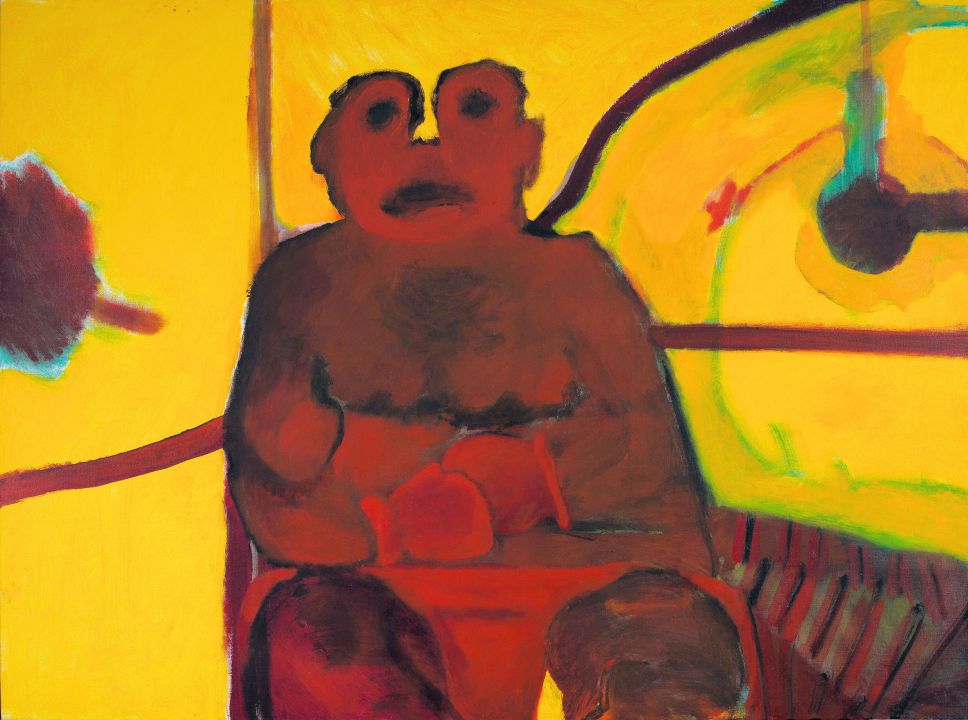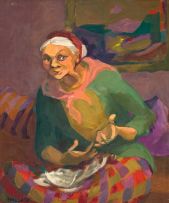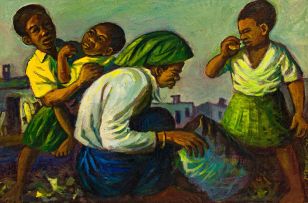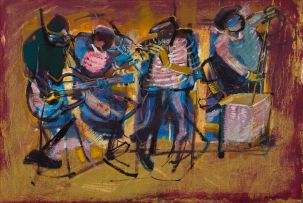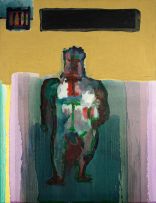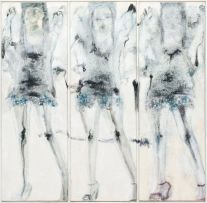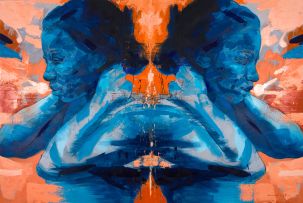Important South African & International Art, Decorative Arts & Jewellery
Live Auction, 6 March 2017
Important South African and International Art - Evening Sale
Incl. Buyer's Premium & VAT
About this Item
signed, dated 1999/2000 and inscribed with the title and medium on the reverse
Notes
When he was 14, Robert Hodgins was yanked out of school and told by his mother to earn his keep. He was employed as a gofer at Libraire Populaire, a newsagent on Dean Street in Soho, London. Twice daily, Hodgins delivered reading material to Soho's beau monde, including politician and art collector, Sir Philip Sassoon, and the seventh Duke of Leinster, Edward FitzGerald, who scandalised polite society by marrying May Etheridge, known as the "pink pyjama girl" of Shaftesbury Theatre. Between deliveries Hodgins swept floors and kept watch over printed material on the store's pavement display. "A lot of it was sheer boredom," he recalled in 2007.1 "Standing watching people go by on the street, making sure they don't nick magazines is not the most enlightening of opportunities." The mind-numbing labour however trained his eye to recognise detail and difference in people, a skill that later fed into his work as a painter centrally preoccupied with the human form.
Best known for his sardonic depictions of businessmen and high-ranking military leaders, often channelled through his interpretation of playwright Alfred Jarry's buffoonish regent Ubu, Hodgins' repertoire of archetypes and characters is however far more diverse. This lot is the earliest in a small group of late-career pictures portraying boxers - they include the oil on canvas Ubu, Boxing Promoter (2002) and photogravure Champ (2004). It is also his most haunted interpretation. Rendered in sullied reds, this aging pugilist's most pronounced feature is his cleaved head. This detail corresponds with a fragment of biography from Hodgins' youth.
In 1918, London's Pugilistic Benevolent Society was renamed the British Board of Boxing Control. An important sanctioning body, it also distributed pensions to retired fighters from its headquarters on Dean Street, close to where Hodgins worked. "Outside were these boxers in various stages of decrepitude, heroic figures who couldn't walk straight. They were shaking and had brain damage," remembered Hodgins.2 Rather than functioning as a portrait of any particular boxer, this lot describes a formative visual encounter from the artist's adolescence, one that stayed with him after he left London in 1954 to teach painting in Pretoria. Commenting on his working life and visual training on Dean Street, Hodgins later observed: "At the most impressionable time of my life, without knowing it, I was being impressed."
- Sean O'Toole. (2008) 'The Human Fog', in The Ceramic Art of Robert Hodgins, Van Wyk, Retief. Cape Town: Bell-Roberts Publishing.
- Interview with artist by Sean O'Toole, November 2007, Menlo Park, Pretoria.
